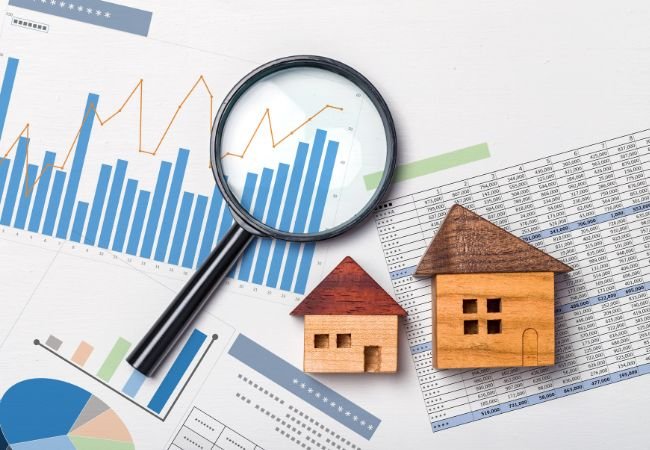Are you looking to invest in real estate but overwhelmed by the various financial jargon being thrown around?
Fear not, as we delve into one of the most important terms in real estate – Net Operating Income (NOI).
Understanding NOI is crucial to making intelligent investment decisions in the real estate market.
This article will take you through what NOI is, how it is calculated, and why it matters in evaluating a property’s investment potential.
Read on to gain clarity and confidence in your real estate investment ventures.
Table of Contents
- Introduction: Understanding NOI in Real Estate Investing
- How to Calculate NOI: A Step-by-Step Guide
- The Importance of NOI in Commercial Real Estate Valuations
- Using NOI to Evaluate the Profitability of Real Estate Investments
- Maximizing NOI: Innovative Strategies for Real Estate Investors
- The Role of NOI in Financing Real Estate Projects
- Conclusion: Making Informed Decisions with NOI Analysis
- People Also Ask
- Conclusion
Introduction: Understanding NOI in Real Estate Investing
NOI, or net operating income, is a crucial metric for real estate investors. It is a measure of the income that a property generates after accounting for all operating expenses. NOI is a powerful tool that can help investors evaluate the profitability of a property, determine its value, and make informed decisions about buying, selling, or financing real estate investments.
NOI is an important concept in commercial real estate, where rental income is a key driver of property value. However, it also applies to residential real estate, where investors can calculate NOI by subtracting their expenses (such as property taxes, insurance, and maintenance costs) from the rental income they receive.
NOI Formula
Calculating NOI is simple: it involves subtracting operating expenses from gross income. The formula looks like this:
NOI = Gross Income – Operating Expenses
Gross income includes all revenue generated by the property, such as rental income, parking fees, and laundry income.
Operating expenses include all expenses necessary to run the property, such as property taxes, insurance, maintenance, utilities, and property management fees.
Real estate investors use NOI to evaluate the performance of a property and compare it to similar properties in the market.
By narrowing down on NOI, they can determine the cash flow from the property and estimate its return on investment, a critical factor in their decision-making process.
How to Calculate NOI: A Step-by-Step Guide
If you’re new to real estate investing or are looking to increase your understanding of how commercial properties are valued, understanding how to calculate Net Operating Income (NOI) is essential.
NOI is a crucial metric that helps investors to evaluate the profitability of a property. It is also a vital component for lenders when assessing the value of property for financing purposes.
Step 1: Determine the Gross Potential Income (GPI)
The Gross Potential Income (GPI) is the total amount of income that could be generated from renting out all of the units in a property at market rental rates.
Calculating GPI is a critical element of determining NOI. Ensuring that your rental rates are market-competitive or slightly higher is essential to maximize the revenue potential of your property.
Step 2: Calculate Effective Gross Income (EGI)
From GPI, the next step is to determine the Effective Gross Income (EGI) which is the amount of revenue generated after considering vacancy and collection losses.
This is calculated by subtracting the expected vacancy and collection losses from GPI. Commonly, the effective gross income for a stabilized property is 90%-95% of GPI.
Step 3: Determine Operating Expenses (OE)
Operating expenses (OE) include the costs incurred in running the property (property taxes, maintenance and repairs, insurance, utilities, and management fees).
It is crucial to ensure that operating expenses are kept low while maintaining the property’s quality to ensure that your NOI is maximized.
Step 4: Calculate Net Operating Income (NOI)
To calculate NOI, subtract the operating expenses from EGI. NOI is a vital metric that helps investors to evaluate the profitability of a property.
It is the primary source of cash flow generated from commercial property investment.
Maximizing NOI is the key to increasing the value and profitability of your real estate investment over time.
Now that you understand how to calculate NOI, it is also essential to understand how NOI is used to evaluate the profitability of real estate investments.
The Importance of NOI in Commercial Real Estate Valuations
Net Operating Income or NOI is a crucial metric in commercial real estate valuations. This financial figure helps investors assess the property’s operating income after deducting the operating expenses, including property taxes, insurance, maintenance, and management fees.
NOI has a significant impact on the value and profitability of any commercial real estate investment.
Factors Affecting NOI
The NOI of a commercial property depends on various factors such as vacancy rates, occupancy levels, rental rates, and operating expenses.
Rental income is an essential factor that impacts NOI. The higher the rental income, the more significant the NOI, and hence the property’s value.
Lower vacancy rates lead to higher occupancy levels, raising rental income and consequently, NOI. Additionally, minimizing operating expenses can help enhance NOI, increasing the property’s value.
NOI and Cap Rate
NOI is an integral part of the capitalization rate or cap rate calculation. The cap rate is the ratio between NOI and property value, and it represents the expected rate of return on a property.
A higher NOI indicates a higher cap rate, which translates to a higher property value. Hence, comprehensive NOI calculations help investors determine a property’s appropriate cap rate, leading to better valuation and investment decisions.
In summary, NOI is a critical component of evaluating and valuing commercial real estate assets.
Investors must understand the importance of NOI in determining the property’s profitability, market value, and financing options.
Using NOI to Evaluate the Profitability of Real Estate Investments
One of the key reasons why NOI is important in real estate investing is its ability to evaluate the profitability of a property.
NOI provides a clear picture of the income generated by a property, minus the necessary expenses associated with its operations.
It is a critical metric that demonstrates whether an investment is worth making or not.
So, how can you use NOI to evaluate the profitability of real estate investments?
First, you need to determine the cap rate of the property, which is the ratio of the net operating income to the property value.
A higher cap rate indicates a higher potential return on investment. Conversely, a lower cap rate suggests a lower potential return.
Second, you need to compare the cap rate of the property to the overall market cap rate for similar investments. This will help you determine if the property is overpriced or underpriced compared to its competitors.
If the property has a higher cap rate than the market average, it may be undervalued and represent a great investment opportunity.
Finally, consider the stability and predictability of the property’s income. If the income is unstable and unpredictable, it will be difficult to calculate the NOI accurately.
This may result in an inaccurate evaluation of the property’s profitability.
In summary, NOI is a fundamental measure of a property’s financial health and profitability. Real estate investors use it to determine the investment’s potential return on investment and ensure they are making informed decisions.
By calculating the cap rate and comparing it to the overall market cap rate and evaluating the stability of the property’s income, investors can accurately assess the profitability of their investment.
Maximizing NOI: Innovative Strategies for Real Estate Investors
Maximizing your Net Operating Income (NOI) is a crucial aspect of real estate investing. Remember, NOI is the amount left after deducting all operating expenses from the gross income.
Higher NOI implies better income streams and increased property value. Here are a few innovative strategies you can use to maximize your NOI:
- Renovate the Property: Property renovations like replacing old appliances, updating interiors, and improving the exterior can raise rental rates. This will result in increased income and higher NOI.
- Become Energy Efficient: Adopting energy-saving techniques like moving towards renewable sources of energy, insulating attics and walls, and installing smart meters can lower utility costs, raising NOI.
- Lease the Unused Space: If there is unused space on the property, consider leasing it for storage, parking, or even hosting events. This can generate additional income while keeping expenses low.
- Introduce Property Amenities: Consider offering amenities like a fitness center, swimming pool, or coworking space. These facilities attract higher rental rates, increasing the NOI.
- Implement Efficient Property Management Practices: By minimizing vacancy rates, routine maintenance, and cost-saving measures, you can keep operating expenses low, leading to a higher NOI.
Implementing these strategies can significantly impact your NOI, resulting in a more robust financial revenue stream and a higher property value.
It is essential to research and analyze the investment’s long-term feasibility before applying these approaches.
By taking a proactive approach toward optimizing NOI, real estate investors can achieve their financial goals.
The Role of NOI in Financing Real Estate Projects
NOI plays a crucial role in the financing of real estate projects. The stronger the NOI, the more likely a lender will be willing to provide financing for a deal.
When evaluating a loan request, a lender will use the NOI to determine the property’s ability to generate income and service the debt.
Debt Service Coverage Ratio (DSCR)
The DSCR is a popular metric that lenders use to evaluate the financial health of a real estate project, and it is calculated by dividing the NOI by the annual debt service.
The higher the DSCR, the more likely a lender will approve a loan request. Most lenders require a minimum DSCR of 1.20, which means the proposed operating income must exceed the expected debt service by 20%.
Lenders may also require a reserve fund to cover unexpected expenses or periods of vacancy.
Loan-To-Value (LTV)
The LTV ratio represents the loan amount divided by the property’s appraised value or purchase price, whichever is lower.
The LTV ratio is used by lenders to determine the amount of risk they are taking on with a particular loan and the amount of collateral they have.
Lenders generally prefer lower LTV ratios to manage their risk. The higher the NOI, the lower the LTV ratio can be, giving real estate investors more flexibility in financing their deals.
In summary, when it comes to financing real estate projects, a strong NOI can make all the difference.
Lenders rely heavily on this metric to evaluate the financial health of a property and its ability to generate income.
Therefore, real estate investors should focus on maximizing their NOI to increase their chances of securing financing for their next project.
Conclusion: Making Informed Decisions with NOI Analysis
Understanding NOI is crucial for real estate investors looking to make informed decisions. It allows them to calculate the net income generated by a property and evaluate its profitability.
By analyzing NOI, investors can determine whether a real estate investment is worth pursuing.
NOI is also important in commercial real estate valuations. It is used by appraisers to determine the property value and by lenders to evaluate the risk of financing a real estate project.
Maximized NOI can lead to increased property value and attract more financing options for investors.
To maximize NOI, real estate investors can employ innovative strategies such as reducing operating expenses, increasing rent revenue, and improving property occupancy rates.
These strategies can improve the overall profitability of real estate investments.
NOI is not only useful for analyzing real estate investments but also for financing them. Lenders use NOI to calculate the debt coverage ratio, which is the amount of net operating income available to cover debt service payments. A high debt coverage ratio increases the likelihood of receiving financing for a real estate project.
In conclusion, NOI is an essential metric in real estate investing for analyzing the profitability of a property, evaluating its value, and attracting financing options.
By understanding and utilizing the NOI analysis, investors can make informed decisions and maximize their returns on real estate investments.
People Also Ask
What does NOI mean in real estate?
NOI stands for Net Operating Income, which measures the income generated by a property after operating expenses are deducted from the total income earned.
How is NOI calculated in real estate?
NOI is calculated by subtracting all the operating expenses of a property (such as management fees, utilities, property taxes, and insurance) from the total income the property generates. The resulting figure is the property’s NOI.
What is a good NOI percentage in real estate?
A good NOI percentage depends on the market, the type of property, and the location. Generally, a higher percentage is better, and some investors aim for a 10-12% minimum NOI.
Why is NOI important in real estate investing?
NOI is important in real estate investing because it indicates how profitable a property is and how much income it can generate. The higher the NOI, the more valuable the property is likely to be.
How is NOI used to determine the value of a property?
NOI is used as the basis for a common valuation method in real estate known as the capitalization rate, or cap rate. The cap rate is calculated by dividing the NOI by the property’s market value, which helps determine the value of the property.
Conclusion
In conclusion, Net Operating Income (NOI) is an important metric in real estate investment that measures a property’s income after expenses are deducted.
It’s used to determine the profitability of a property and helps investors determine its overall value. Understanding NOI is crucial for anyone interested in real estate investing.











